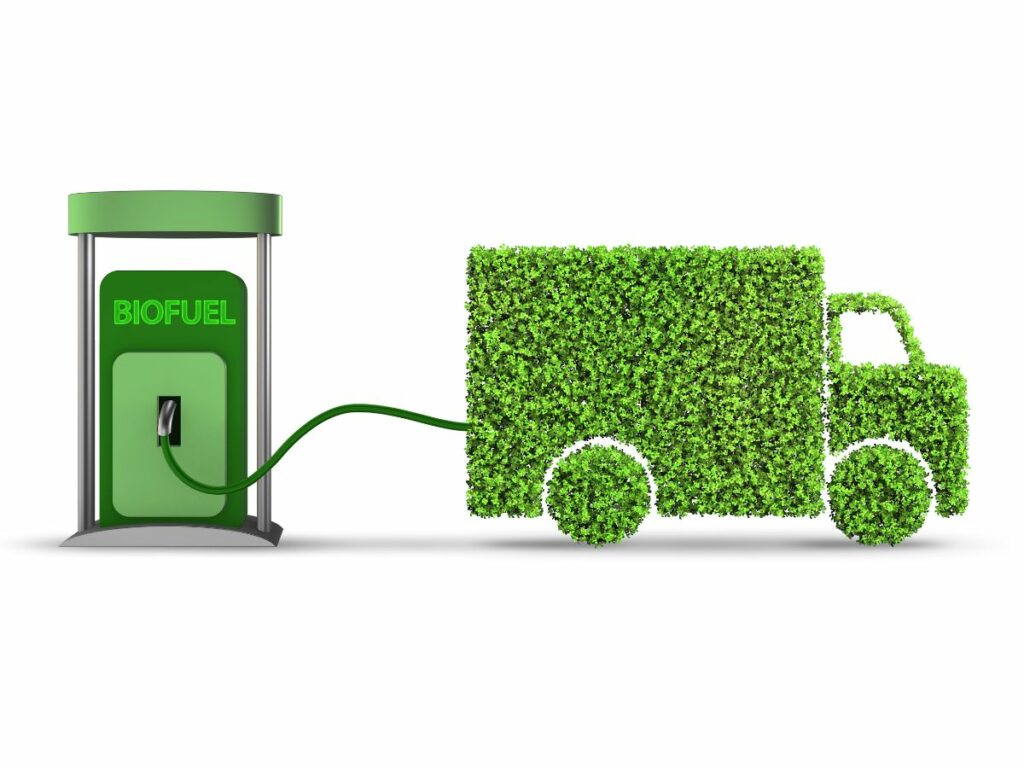Page Contents
Definition: Biomass/biofuel energy financing refers to the financial mechanisms and investments aimed at supporting the production and utilization of biomass and biofuels for energy.
Capital Structure: It involves a blend of equity investment, debt financing, and often government subsidies or incentives, tailored to the specific requirements and risks of biomass projects.
Objective: To promote the development and use of biomass and biofuels as renewable energy sources, contributing to energy diversity and sustainability.
What is biomass energy?
Bioenergy is renewable power derived from organic resources. It can be harnessed through various processes such as biofuels, biopower, and bioproducts.
Green energy from biomass is an alternative to fossil fuels and is considered an environmentally friendly energy source.(1)(2)(3)
What are the different types of bioenergy?
Green energy from biomass can be classified into three categories: biofuels, biopower, and bioproducts.
Biofuels are liquid or gaseous fuels produced from biomass that can be used as a source of energy.
Biopower is electricity generated through the combustion of biomass in a power plant.
Bioproducts are bio-based products derived through processes such as fermentation, chemical synthesis, and bio-catalysis.
How does bioenergy compare with fossil fuels?
Bioenergy is a renewable resource that can be domestically produced, reducing dependence on foreign oil.
Green energy from biomass production also emits fewer greenhouse gas emissions than fossil fuels, making it a more sustainable energy source.
However, the production of biomass for organic energy can have environmental impacts, such as deforestation and the use of fertilizers. This should be considered when assessing the overall sustainability of biopower production.

Financing options for bioenergy projects
What are the key financing options for bioenergy projects?
Investment options for green power ventures include equity financing, debt funding, and project finance.
Equity financing involves selling shares in the company to investors, with the expectation of a return on investment in the form of capital appreciation or dividends.
Debt funding involves borrowing money from lenders that must be repaid with interest.
Project financing is a loan provided to a specific undertaking based on the projected cash flow and assets.
This exploration of financing options underscores the critical role of renewable energy finance in enabling renewable energy companies to successfully deploy and expand bioenergy projects, serving as a cornerstone for the broader renewable energy sector.(4)
What are the factors that impact investment options for bioenergy projects?
The cost of feedstock and technology, as well as the price of the product, are important factors that impact investment options for green projects.
The availability of funding and support from government programs, renewable energy investment funds, and private investors can also play a significant role in the success of green biopower projects.
Why are renewable energy investment funds important for bioenergy projects?
Renewable energy investment funds pool capital from investors for investment in renewable power companies and projects.
These funds can provide significant capital to developers for bioenergy projects and help to reduce the barriers to entry for small and medium-sized enterprises.
Policy and economic support for bioenergy projects
What are the current bioenergy policies and incentives?
The policies surrounding bio-based power in the US are determined at both the federal and state level.
There are various green policies and incentives aimed at improving the efficiency of bio-based power production and encouraging its development.
These policies include subsidies, tax credits, and grants.
What is the impact of government regulations on bioenergy development?
The implementation of government regulations can have both positive and negative effects on the bio-power industry.
Policy regulations aimed at reducing greenhouse gas emissions and promoting renewable energy production can spur the advancement of innovative bio-based technologies.
However, excessive regulation can result in increased costs of compliance and decreased investment in the industry.
What are the economic benefits of developing the bioenergy industry?
The development of the bio-power industry can lead to job creation, economic growth, and energy security.
Through the use of domestically produced biofuels and biopower, dependence on foreign oil can be reduced.
Additionally, the establishment of supply chains for feedstock production can benefit the agricultural industry, which can further strengthen the overall economy.
Funding opportunities for bioenergy projects
What are the funding opportunities available for bioenergy projects?
There are various funding opportunities available for green projects, including grants, loans, and economic incentives.
The US federal and state governments, as well as private entities, support these funding opportunities.
How can national and international bioenergy programs provide funding support?
National and international organic energy programs can provide funding and support for research and advancement activities, training and education of employees, and financial assistance for infrastructure expansion.
Such programs establish partnerships with private and public entities to facilitate the sharing of knowledge and resources to develop the bio-power industry.
What are the grants and economic incentives to support bioenergy development?
The federal government offers a range of grants and economic incentives to support organic energy advancement.
These include tax credits, accelerated depreciation, and loan guarantees, that help developers improve the financial return of their projects.

The future of bioenergy financing
What are the latest technologies and advancements in bioenergy financing?
The advancement of new and improved bioprocesses, such as the use of advanced feedstocks and the production of bio-based chemicals, is expanding the scope for green power financing.
In particular, the use of biorefineries that can produce a range of bio-based products is attracting attention from investors and developers.
What are the new partnerships and initiatives to support bioenergy development?
New partnerships between public and private entities are emerging to support the advancement of the green power industry.
These include collaborations between investors and developers, as well as partnerships between universities, research institutions, and commercial companies.
These partnerships facilitate the development of innovative technology and provide a platform for sharing knowledge and ideas.
How will bioenergy financing help achieve sustainable energy objectives?
Financing green energy from biomass will play a significant role in achieving sustainable energy objectives.
By providing funding for the development of renewable energy technologies, green power financing can contribute to reducing greenhouse gas emissions and promoting sustainable development.
Bio-based power generation industry growth will help to establish a reliable and sustainable source of energy that can improve energy security and benefit the environment.
REFERENCES:
- US Energy Information Administration, Biomass explained, retrieved from https://www.eia.gov/energyexplained/biomass/
- International Energy Agency, Bioenergy, retrieved from https://www.iea.org/energy-system/renewables/bioenergy
- Climate Bonds Initiative, Bioenergy, retrieved from https://www.climatebonds.net/standard/bioenergy
- The SDG Knowledge Hub, De-risking Bioenergy: How PPP Models Can Crowd in Private Investments, rertrived from https://sdg.iisd.org/commentary/guest-articles/de-risking-bioenergy-how-ppp-models-can-crowd-in-private-investments/

